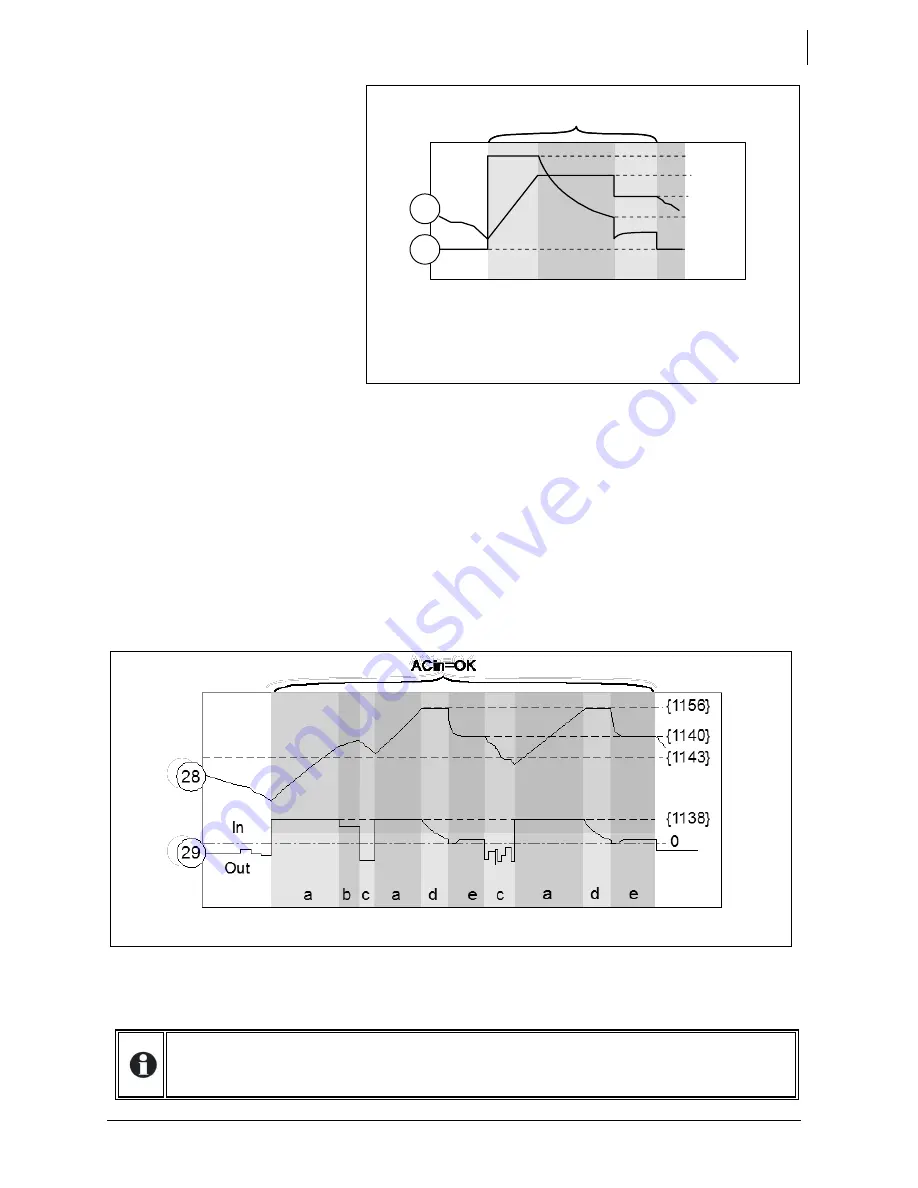
Studer Innotec SA
Xtender
User manual
V4.6.0
29
The charge cycle, programmed by
default, as shown in the example
described in the figure opposite,
runs automatically.
The
line
(28)
indicates
the
development
of
the
battery
voltage.
The lower line (29) indicates the
battery current (input and output).
The cycle starts with a continuous
current charge
(a)
adjusted by
default according to the parameter
{1138}. If the ambient temperature is
increased
or
the
ventilation
blocked, the current may be
reduced and become lower than
the selected current. Once the
absorption voltage {1156) is reached, the cycle passes to voltage adjustment mode
(d)
, known as
the absorption phase, the duration of which is set by the parameter {1157}. The minimum interval
between two absorption cycles is limited by the parameter {1161).
At the expiry of the absorption time, or if the absorption current is lower than the parameter {1159},
the voltage is set to a lower value {1140}. This phase
(e)
is known as the maintenance or "floating"
phase. Due to the limiting function for the input current (see p. 27), it is perfectly normal for the charge
current to be lower than the selected current if the limit of the AC input current {1107} is reached (b).
In this event the AC-IN indicator (45) flashes. The charge current will be limited too if the battery
voltage ripple is higher than 0,5V/cell.
If the "Smart Boost" function is activated {1126} and the power required by the consumer exceeds
the power of the source, the battery will be discharged (c) despite the presence of the grid or the
generator. In this case, the LED "charge" (4) goes out. The consumers must ensure that they have
average consumption that is less than the power of the source (generator or public grid) in order to
avoid a complete discharge of the battery. These situations are set out in the figure below.
If the BTS-01 temperature sensor is used, the voltage adjustment thresholds for the battery are
corrected in real time by means of the battery temperature. The value of this correction is set by the
parameter {1139} in the parameter table p. 47.
Much more complex charge profiles or exclusion of the charger can be configured using
the RCC-03/03 remote control.
Fig. 3b: Simplified charge cycle, without input current
limitation
{1140}
{1156}
{1138}
{1159}
a
d
e
28
29
ACin=OK
Charge cycle example with input current limitation and “Smart Boost”
















































